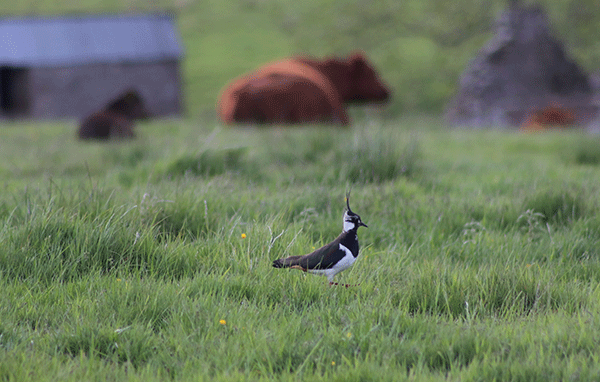At the end of last year, the UK’s biggest bird protection charity, the RSPB, announced there are more UK bird species on the precipice of extinction than ever before.
A worrying one in four species in Britain are now on the RSPB’s ‘Red List’ of concern as a result of severe declines since the first review in 1996. Even some birds once thought common, such as the swift, starling, and house martin have had a hard time of it – swifts having experienced a depletion of 58 per cent in the last 25 years.
Climate change, affecting wintering and migratory patterns, is partly to blame. Disease outbreaks, such as trichomonosis, is devastating garden birds especially, while illegal hunting and trapping is still a significant threat for raptors.
But the fact that so many birds nest and feed within the stewardship of farmers’ land is arguably the most significant contributor to their decline – especially when 75 per cent of UK land is agricultural. Insecticides used in conventional farming are killing off insects en masse, which in turn reduces natural feed for birds.
Neonicotinoids, a form of pesticide, pose one of the greatest threats to bee populations, and, by extension, birds too. The EU banned them in 2018 but, after Brexit, was temporarily sanctioned in the UK in 2021.

Farmers may receive a lot of the stick for the bird die-off, but not all of them are fine with turning a blind eye to the situation. “We’ve got curlew, oystercatcher, lapwings here, but we never really thought about counting them, until I started taking photos and speaking to the RSPB. And to be honest, I actually had no idea how very endangered wading birds are.”
Aylwin Pillai’s family farm on the Kinclune Estate in Scotland has worked with the RSPB since summer 2020 to formally monitor nesting birds, also teaming up with the Nature Friendly Farming Network (NFFN) and Working for Waders, an initiative set up to stem the decline of wading birds. Lapwings, curlews, and oystercatchers have dropped in number by 55 per cent, 61 per cent, and 38 per cent respectively since 1994.
Wader scrapes (a type of shallow pond) have been created to encourage them back onto the farm’s 1,100-acres, but a lot of the work has come on behalf of Pillai’s Aberdeen Angus and Limousin-cross cattle. “We realised the way that the livestock graze – there are shorter grazed areas, and they leave tufty areas. They break up the soil and they’re producing cowpats. These are all sources of food and shelter for the birds.”
Waders don’t nest in longer grass, hence the usefulness of livestock in keeping the grass short – a nice example of conservation grazing in action. The farm is also certified organic and undertaking ongoing habitat improvement including wetland and grassland management. “We are actually managing a landscape that is of value to these wading birds,” Pillai says.
“We’re a low stocking density, and that’s beneficial for the ground nesting birds. But I mean, we’re not blind to the fact that there are potential issues. Trampling by livestock is one sort of threat to ground-nesting birds, but with low stocking density, and moving your stock around and thinking about where your nests are, we’re hoping that that’s not too problematic. And we don’t think it is, from having seen chicks on the ground.”

Fostering a habitat for birds on farmland might not be as simple as exclusively digging a big puddle, or letting hedgerows grow out. More birds can mean more predators, which might necessitate controlling their numbers. And farmers are understandably reluctant to attract birds to where food – meant for humans – is abundant.
“In our polytunnels, jackdaws and magpies come in and steal our cucumbers,” says Ed Scott, the harvest manager at organic veg box company Riverford’s Wash Farm. “But some of the insectivorous birds are quite good for keeping down populations of aphids and so on.”
Wash Farm, in south Devon, has started to ramp up its recordings of local wildlife, and seek advice on how to manage their land to make it more accommodating for birdlife. This includes some very rare cirl buntings that were spotted on the farm.
“They like it if you leave the stubble on the ground after [harvesting cereals],” says Scott. “We don’t grow a lot of those crops so we can’t do anything with that. So now’s the point where we get in contact with the RSPB and say, ‘we’re thinking of putting a corner of a field down for a bird-friendly wildflower mix. What do you recommend?’”
Yielding more hedges, wood, and other bits of land back to nature is instrumental in helping bird populations recover, but farmers and conservationists argue the incentives from some government schemes and subsidies could cause more problems. Graham Denny has a 200-acre farm in Suffolk, where he has ‘rung’ (to help identify) over 40,000 birds since 2006.
The farm also has the highest count of red listed turtle doves per kilometre in the country. “We still need arable fields,” he says. “We still need them for the yellowhammers, grey partridge, skylarks, corn buntings, and golden plovers. So we can’t rewild too heavily.”












0 Comments